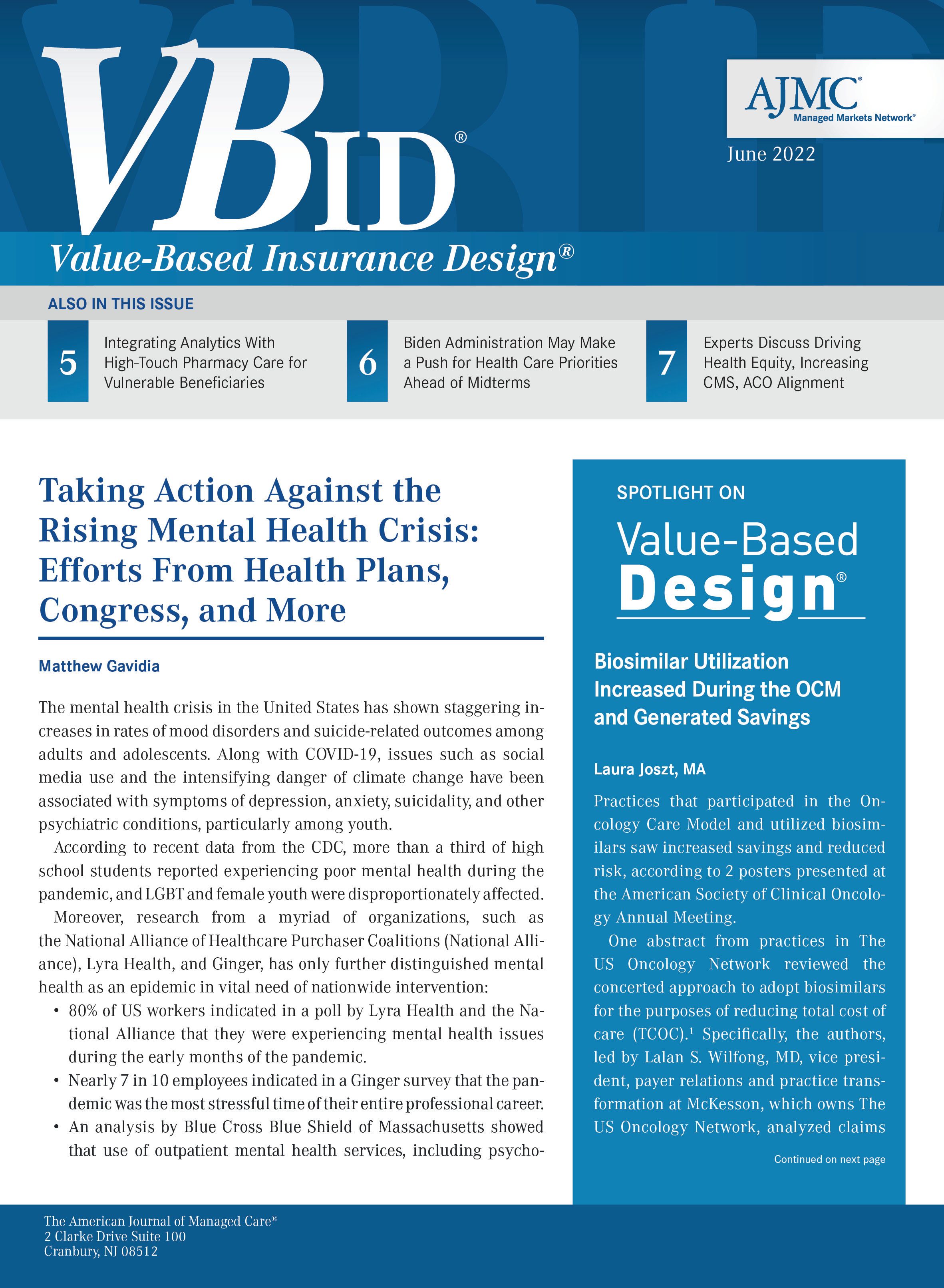Publication
Article
VBID® Value-Based Insurance Design® Newsletter
Integrating Analytics With High-Touch Pharmacy Care for Vulnerable Beneficiaries
Author(s):
UPMC Health Plan, RxAnte, and Mosaic Pharmacy Services outlined how they are operating a value-based pharmacy care management program within Community HealthChoices, Pennsylvania’s managed Medicaid long-term services and supports (LTSS) program, at a recent conference.
How can high-touch pharmacy care management, enabled by analytics and technology, improve health and lower costs when caring for dual eligibles in Medicare Advantage (MA) and managed Medicaid?
At a session at the Pharmacy Quality Alliance 2022 Annual Meeting in Baltimore, Maryland, UPMC Health Plan, owned by the University of Pittsburgh Medical Center (UPMC), RxAnte, and Mosaic Pharmacy Services, outlined how they are operating a value-based pharmacy care management program within Community HealthChoices, Pennsylvania’s managed Medicaid long-term services and supports (LTSS) program.
RxAnte, an analytics firm that is an independent company within UPMC Enterprises, uses predictive analytics to manage medication use; in 2019, it launched Mosaic Pharmacy Service, which assesses the medication regimens of at-risk patients, conducts medication reviews, examines adherence pitfalls, and delivers the medication sorted by day and time.
The trends in MA show why more intensive pharmacy care management is needed, according to Patricia Powers, PharmD, BCPS, director of clinical services at Mosaic.
The number of individuals in special needs plans have more than tripled since 2010, with a higher number of beneficiaries with chronic or disabling medical conditions, she said, and accounting for a higher proportion of health care spending. At the same time, there is an increase in medication waste, estimated by one study to be about $528 million per year.
Traditional fee-for-service models don’t allow for “our ability as pharmacists to provide services such as patient counseling, follow up and created limited opportunity for comprehensive medication reviews,” Powers said.
Not every CHC participant is referred to their service, she said—using analytics, they focus on those who have quality care gaps and unplanned care visits.
These members have to be interested in the service, at which point they are onboarded via phone. Medications are reconciled and Mosaic also identifies issues related to social determinants of health. Members are contacted every month and pharmacists are checking to see if any care transitions have happened, such as after a hospitalization. They also coordinate with providers, Powers said.
“Most of our patients have between 10 and 25 medications, and you can imagine that usually results in 3 or 4 prescribers,” she said.
As an example of their service, Powers presented a case of a beneficiary, aged 71, who otherwise would not have qualified for a traditional medication therapy management program, as she was taking just 6 prescriptions: aripiprazole 2 mg QHS; duloxetine 60 mg 2 capsules QD; potassium chloride 10 meq QD; gabapentin 100 mg 2 capsules TID; clonazepam 1.5 mg QD; and hyrdroyzine 50 mg BID prn.
She was low income, lacked transportation, did not have a high level of education, and she had treatment-resistant depression, generalized anxiety disorder, sciatic nerve pain, and hypokalemia.
“Not any of your chronic disease states that we typically think of who need this type of service,” Powers said
Despite those issues, she was responsible for caregiving for her 4-year-old grandchild, and reported dizziness, sleepiness, confusion, and had had 1 recent fall. She had adherence issues with the clonazepam and the duloxetine and had not seen her psychiatrist in some time due to the pandemic and a lack of transportation.
Mosaic coordinated with the psychiatrist, who saw her via telehealth, and the dosages for duloxetine and hydroxyzine were reduced. She was also advised on how to take clonazepam appropriately.
The changes meant less anxiety and greater alertness for the patient, who reduced 3 medication dosages, and the health plan saved $300.
Overall, the company’s analysis of client data show that when comparing high-risk beneficiaries enrolled in Mosaic with matched controls, there is a savings of $426 per member per month, mostly from reduced, unplanned hospitalizations and emergency department visits. The percent of members who are adherent to their medications were also higher—11% for diabetes medications, for example, and 18.1% for blood pressure medications.
In a question-and-answer session after the presentation, Vanessa Campbell, PharmD, senior manager of pharmacy services at UPMC, was asked what spurred them to look at these members more closely.
If they are in and out of the hospital frequently, she said, “what we see in talking to some of these patients is, they're coming home, and they're extremely overwhelmed, because they have their stocked meds still on the counter, they have new medications that have to be picked up, and frequently, we will see some of these members that don't have a caretaker and they don't have family support.”
Powers added that the lack of social support means that “oftentimes, our calls are longer than a traditional interaction, because we are providing some social support…. We often get involved in things that have nothing to do with the medication regimen.”






